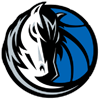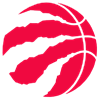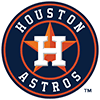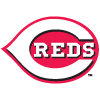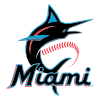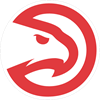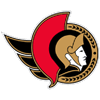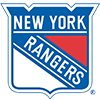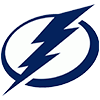The long-standing idiom 'the early bird gets the worm' cannot be any more appropriate than it is for serious fantasy baseball players. Those who play casually are typically content with pulling up website rankings or a cheat sheet and simply drafting with very little preparation. Such is not the case for those who play in competitive mid-range and high stakes leagues such as the National Fantasy Baseball Championship (NFBC), as the legions of dedicated enthusiasts typically begin to prep not long after the previous season has ended. Starting one's research early is not necessarily indicative of future success, but it allows for a head start in analyzing fantasy's deepest player pool, and one that involves an extra layer of analysis with players in the minor leagues.
Tiered Positional Rankings vs. Overall ADP
Regardless of whether we start our prep in December or February, building a set of pre-draft rankings is absolutely crucial as it allows us to identify mispriced/undervalued hitters and pitchers in current ADPs (average draft position lists) -- effectively, identifying market inefficiencies. A pre-draft rankings list should never be written in stone; instead it should be a constant work-in-progress that is constantly updated through the end of spring training where pitching rotation spots are up for grabs, positional battles ensue and unfortunate injuries often occur.
Moreover, the list should never be created as an overall one, but instead as a rankings-by-position list that is tiered with clear drop-offs at specific positions highlighted. Of course, it is important to establish where on an overall draft list a player should be taken, but glancing at these overall rankings too early in our prep can subconsciously engrain in one's mind that Xander Bogaerts must be taken exactly around the 80th overall pick. Baking an overall list into our prep too early in the process handicaps our viewpoints and too easily allows us to follow the herd. Where as we know, in fantasy sports, we are inherently looking for the opposite: to gain an edge. Early mock drafts and deep 50-roster spot NFBC slow drafts help with the perspective of where players are drafted in relation to rounds and the overall, but building out one's own tiered rankings provides an opportunity to sniff out the true value picks based on our own research.
Drafting for Upside and Draft Helium
Every one of our leagues is unique and our understanding of the league settings and rules is essential and rudimentary to how we build our tiered rankings and to how we draft. A longstanding 12 or 14-team Yahoo league among friends requires a different approach than a $350 NFBC RotoWire Online Championship (OC) league that also pays out overall prizes in addition to league ones. The leagues without overall prizes, aka satellite leagues, may have different categories (ie, OBP instead of AVG, K/9 instead of K) which tweaks our approach when researching. More importantly, one can technically 'punt' a specific category in these type of leagues, where such a strategy in leagues with overall prizes cannot be sustained.
Playing in national competition leagues such as the OC or the NFBC live Main Event (15-team leagues with both league and overall prizes) also affects our approach towards the player pool since it would behoove us to tailor our prep toward identifying players with higher upside. It's the classic 'high ceiling vs. high floor' approach in overall competitions since a predominance of high-ceiling players with breakout upside on one's fantasy team is paramount for competing in a pool over 2,000 teams as opposed to a group of 12. Though identifying those breakout studs beforehand is always easier said than done, it's possible to identify players who have flashed some form of dominance either in the minor leagues or over the second half of a MLB season as those who drafted 2017 bargain-priced stud Yankees Aaron Judge and Luis Severino can attest. In a satellite 12-teamer, one can feel more comfortable banking predictable stats from the likes of the boring and unsexy. With players like Kyle Seager, DJ LeMahieu, and until this past season, Miguel Cabrera, fantasy managers can adequately project a 5x5 stat line that will fall within a close range of their actual results. Those playing in overall leagues rarely go out of their way to draft a Seager or LeMahieu far ahead of their ADP.
On the contrary, 'draft helium' is a common occurrence in the high stakes world and can literally suck the value out of a player's ADP. This can happen with a strong spring training, more playing time becoming available due to an injury, or a move to a more prominent position in the lineup. Such was the case last season with Jacob deGrom. Identified as someone clearly mispriced because of a subpar and injury-riddled 2016, I acquired deGrom in a January industry draft in the ninth round as my SP3 (100th overall pick). In February, deGrom was more aptly priced with an ADP in the fourth round of 12-team leagues (around 50th overall). By the time high stakes drafts rolled around in late-March, deGrom was taken as high as the mid-second round (19th overall) where he would have been required to post a repeat of his magical 2015 season (2.54 ERA, 0.98 WHIP, 205 K) to provide value at this new peak price. We will see similar situations this year with 'sexy' high-upside, high-K/9 starting pitchers like Luke Weaver and Luis Castillo. On one hand, it makes sense for those who are well-prepped early on to draft NFBC squads with overall prizes in February before the hype train lifts these players' ADP to the point of no value. This comes with the risk of injury striking key draft picks before the season has even started, but in my experience, the reward typically exceeds the risk for those who are able to grind throughout an entire season and make up such injuries with profitable, in-season FAAB acquisitions.
Discovering the Hidden Gems
Profitable players come in all shapes and sizes. They aren't always the highly-touted prospects like Ronald Acuna or the revolutionary overseas transplants like Shohei Ohtani. Not to mention, those popular names rarely have any value built in to their price since market demand soars their draft-day price tag to epically high proportions. Often, the best late-round values are the players who have spent a few years in the majors, but eventually had massive breakout campaigns on a whole other level -- Justin Smoak and Mike Moustakas come to mind. A seven-year MLB veteran, Smoak entered the 2017 season never playing more than 135 games, never hitting higher than .235 in a season and failing to ever top the 20-homer mark. After a mediocre April start, Smoak wasn't even playing every day, but he gradually secured a full-time job and a middle-of-the-order lineup slot, smashing 18 homers between May and June with a batting average hovering around .300. As is the case with multiple breakout players early in the season, Smoak likely cost folks a dollar or two as a free agent in late April. By the time everyone started to realize what was going on, it was too late. You'd have to pay at least a couple hundred in FAAB to employ Smoak on your fantasy squad; if he was even still available. A six-year vet himself, Moustakas had shown flashes of power before, but had never truly put it all together as he did in 2017, matching Smoak with 38 home runs, tied for baseball's eighth-best mark.
Players who have previously displayed fantasy value coming off injury-plagued seasons can also be valuable, and easier to prognosticate for that matter. David Peralta was my biggest late-round draft target last February specifically for batting average (a tough find after Round 20) and the fact that he was expected to have a spot in the top-third of a fantasy-friendly Diamondbacks' lineup, which included the benefit of playing half of his games in a hitter's haven. Peralta was deemed fully healthy after offseason wrist surgery, yet somehow remained under the radar in high stakes drafts with very little March draft helium. Ryan Zimmerman was a common denominator on many league-winning NFBC teams as well. Undrafted in most national 12 and 15-team contests, Zimmerman was a true afterthought fantasy asset after spending 205 days on the DL over the past four seasons. To everyone's surprise, the 33-year-old had a career year (.303-36-108) with the 36 homers serving as a career high.
There are countless examples every year of late-round and undrafted values who help fantasy managers win their league and compete for overall prize money. Whether those are players coming off a subpar season, injury-marred campaign, or are fresh out of the minors and ready to contribute, the opportunity to bountifully draft them is always there. Understanding what you are playing for (league vs overall), and astutely building tiered rankings based on your own research is always the best way to identify those values so you can ride the waves of market inefficiencies to success.
This article appears in the 2018 RotoWire Fantasy Baseball Guide. You can order a copy here.







